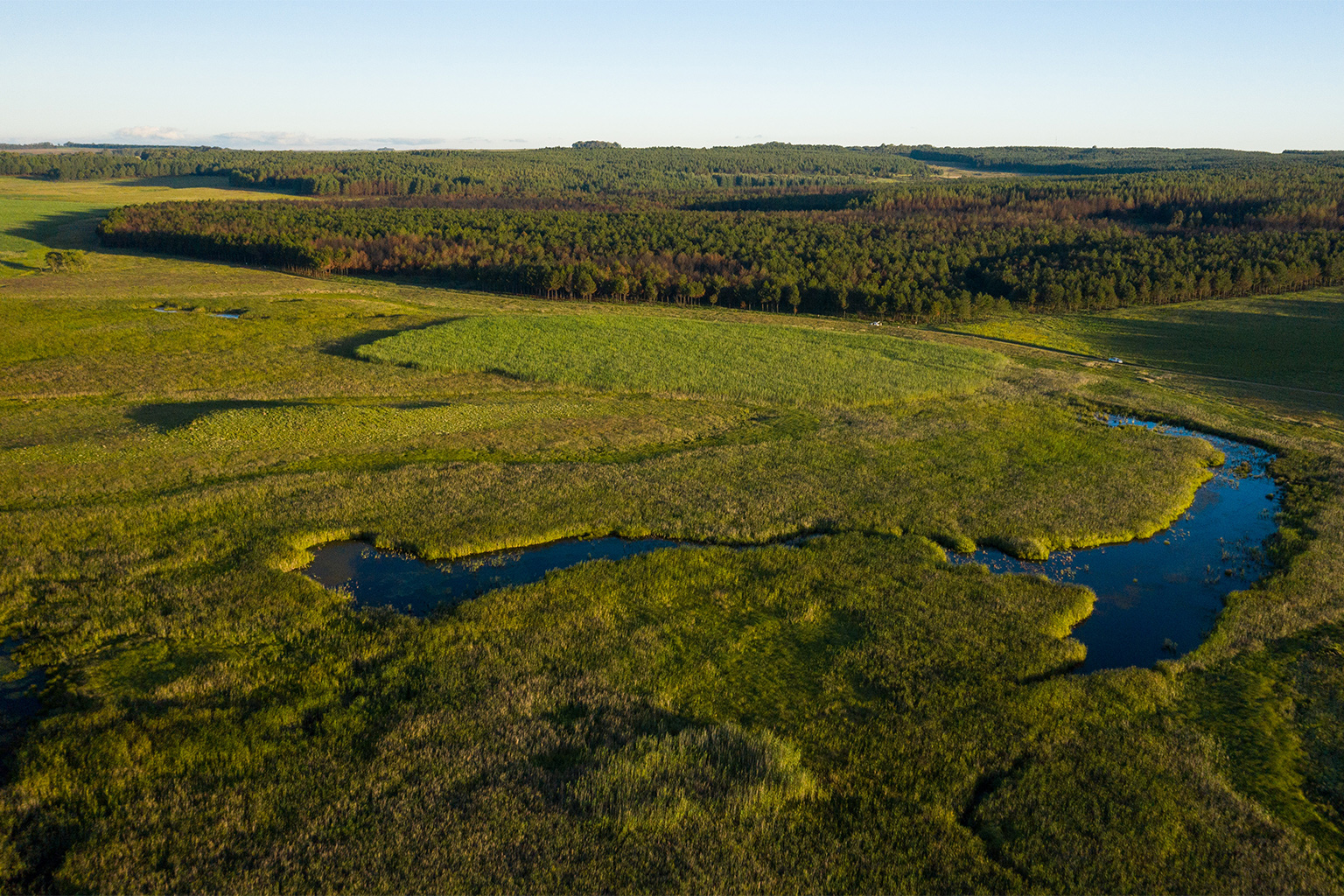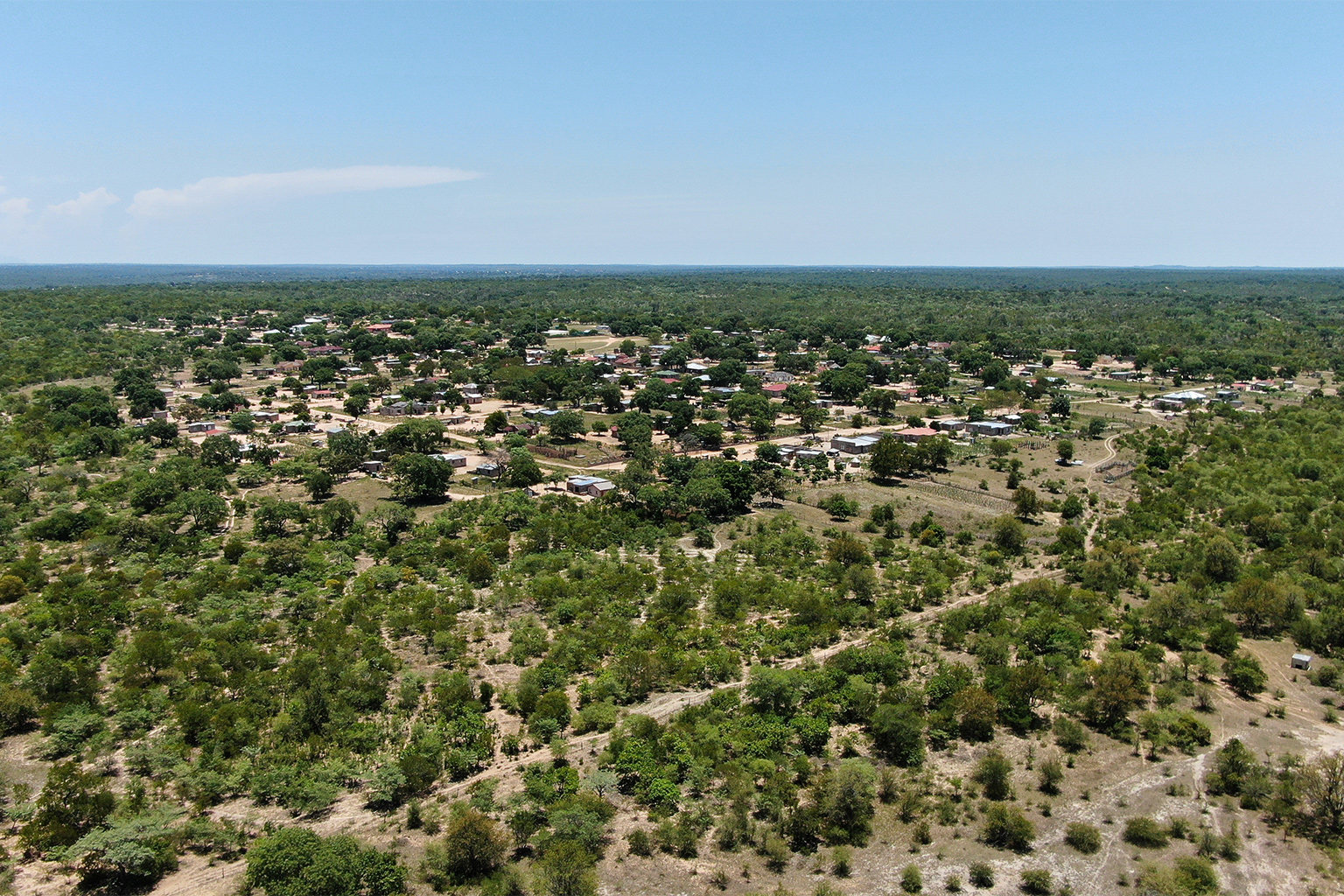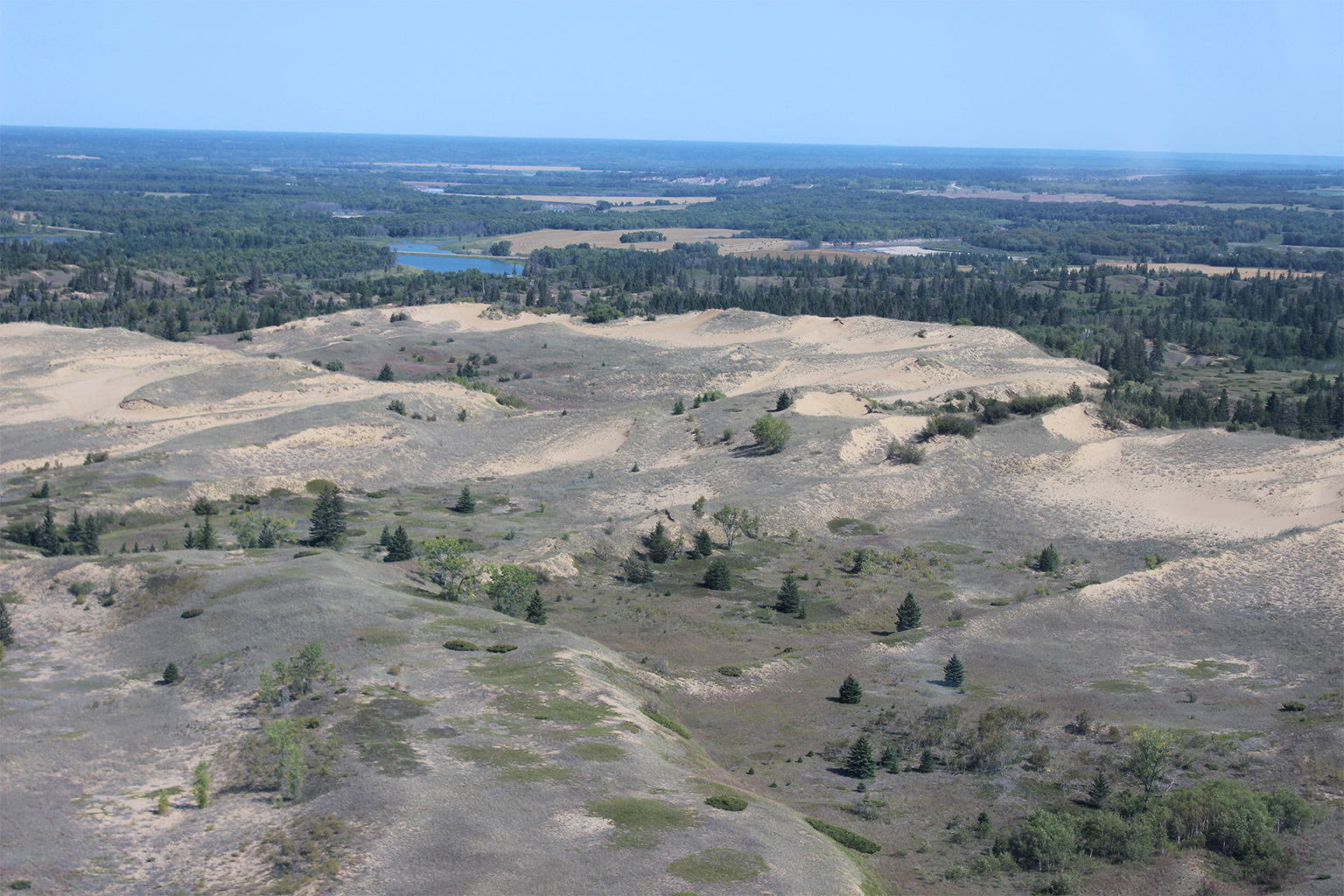
- Devised under the U.N. Convention on Biological Diversity, “other effective area based conservation measures” (OECM) are an alternative to traditional protected areas, in that they can include any geographically defined area that has a management structure and can show a long-term positive impact on biodiversity.
- OECM supporters say they are potentially a more equitable form of conservation that can work for groups previously disenfranchised or sometimes at odds with traditional conservation, such as some Indigenous groups and local communities as well as sustainable agriculture, fisheries and forestry sectors.
- A key aspect of the OECM definition is that these areas must effectively contribute toward biodiversity, something currently not required of a protected area; but how that is defined and measured in practice will take time to establish.
Ever heard of “other effective area-based conservation measures” (OECM)? Snappily named, they are not. But convoluted acronyms aside, supporters of OECMs, a designation by global conservation authority the IUCN, are betting they will not only be a new element in the conservation toolkit, but more importantly an avenue to a more diverse and inclusive discussion on conservation.
“OECMs represent a moment in time in conservation practice,” says Harry Jonas, co-chair of the specialist group on OECMs at the IUCN’s World Commission on Protected Areas (WCPA).
“Globally we are requesting and requiring states and others to be more diverse, more inclusive and more focused on conservation outcomes,” says Jonas, who is also a human rights lawyer and co-author of a recent commentary in Nature arguing in favor of OECMs.
The phrase OECM first appeared in 2010 in the Convention on Biological Diversity (CBD). At that stage, these “other measures” weren’t really defined; they were more of a vague concept — a catchall statement for anything that didn’t meet the criteria for a protected area. It wasn’t until Jonas and his colleagues decided to dig into the term further that the concept started to develop some substance, and in 2018, the CBD released a decision defining OECMs.
So, what exactly is an OECM? An OECM is an area that is geographically defined, has some form of management in place, and achieves sustained positive outcomes for biodiversity. The definition is very similar to the IUCN definition of a protected area (think: national parks and wildlife reserves), and with seven different categories of protected area on offer, you may well be wondering where OECMs fit in.
In the high-level IUCN definition of a protected area, conservation should be part of the core management goals for an area. But for an OECM there just needs to be sustained conservation benefits, irrespective of the core management goals. For OECM supporters, this distinction may be subtle, but it’s absolutely crucial.
“OECMs can include areas that are managed by small-scale fisheries, by low-impact agroforestry, among many other types of rights holders and actors who manage areas,” says Emily Darling, a co-author on the Nature commentary and director of coral reef conservation at the Wildlife Conservation Society (WCS). “This can bring a lot more people to the conservation table, and that’s crucial.”

A new conversation
In practice, there are a huge variety of protected areas, including sustainable use areas, and, arguably, many of the potential locations for OECMs could become protected areas, given enough political will. But there’s no doubt that the concept of a protected area comes with baggage.
The list of human rights abuses associated with protected areas is long, from the brutal “relocations” during the establishment of protected areas in the colonial era, right up to the present day with reports of abuse by WWF-funded park rangers in Central Africa and South Asia.
Some local communities and Indigenous peoples still experience conservation as a top-down imposition that prioritizes nature above their own human rights.
“Indigenous Peoples are stewards of thousands of years of knowledge that cannot be contained under the conventional frameworks that have always had a binary — it is either conservation by these Western rules or it is not,” says Emma Lee, an Aboriginal and Torres Strait Islander Research Fellow at Swinburne University of Technology, Tasmania, who has worked with Jonas to engage with OECMs.
The discussion around OECMs comes at a vital time, as nations consider joining the global “30 by 30” campaign. This conservation campaign aims to protect of 30% of the Earth’s land and oceans by 2030. It has been gaining traction, supported by U.S. President Joe Biden and even included in the first draft of the U.N. biodiversity treaty.
However, critics say there’s no scientific basis for the target, and it could result in a widespread land grab, dispossessing Indigenous peoples. Supporters say the “30 by 30” target can be achieved in a more equitable way, by conservationists and governments working with existing groups and rights holders to strengthen, rather than displace them.
But given conservation’s murky history on human rights, not everyone is convinced.
“They are just inventing another category,” says Fiore Longo, a campaigner at Survival International, an NGO that works with Indigenous groups. ”If we have scientific proof that Indigenous lands, as it is, are working for nature, why don’t we call for a huge recognition of Indigenous land?”
Longo says she’s concerned about any policy that makes Indigenous rights in any way potentially reliant on conservation outcomes.

The International Indigenous Forum on Biodiversity raised similar concerns when consulted on the OECM guidance. The researchers writing in Nature say they also recognize the dangers of the imposition of external world views.
Whether OECMs gain traction, and what they could ultimately look like in practice, will depend on which groups choose to engage with the concept and how they do so. Supporters say the CBD’s inclusion of a reference to the U.N. Declaration on Human Rights — rare in environmental instruments — is a signal to those outside of the traditional conservation world that this may not be just business as usual.
And there are some signs that this could be working.
“For me, as an Indigenous person … I have found a place where I am welcome and my knowledge is valued,” Lee says. “There are so few avenues out there for people like me to be heard, OECMs has created that culturally safe space for me to engage with conservation from a position of strength.”
And it’s not just members of the Indigenous community who are starting to engage, according to supporters.
Darling and Jonas say the OECM concept is unlocking other conversations that have previously ground to a halt, such as with the fishing industry, which has often clashed with the conservation sector over the establishment of marine protected areas (MPA).
“We are at a crossroads in our future,” Darling says. “Any way that we can embrace … actively governed and managed areas that lead to biodiversity outcomes, that’s the conversation we need to have now.”

E is for ‘effective’
The E in OECM stands for “effective,” and it’s something that OECM supporters are keen to emphasize.
At present, the definition of a protected area includes no measure for effectiveness. Indeed, conservationists have accused many protected areas around the world of being nothing but “paper parks,” a checklist exercise by governments that doesn’t actually contribute to biodiversity. For example, in the U.K., the MPA network is sold as a proud symbol of the government’s target of protecting 30% of ocean biodiversity by 2030. However, the NGO Oceana found that bottom trawling, one of the most destructive fishing practices, was taking place in 97% of U.K. MPAs.
By focusing on effectiveness, OECM supporters hope to cut through to what really matters. They say any area that gets results for biodiversity can be tested and recognized as doing so, irrespective of what else it’s managed for and with no requirement to change. However, how to define and measure effectiveness for such a diverse range of possible land and marine uses and rights holders could prove challenging.
Canada is one of the only countries to use OECMs so far, and did so even before the CBD definition in 2018. One of the main reasons Canada embraced OECMs was as a way to meet a target of protecting 10% of its coast by 2020.
“Our review in 2019 of Canada’s OECMs against … the CBD criteria found a range of compliance,” says Susanna Fuller, vice president of operations and projects for Oceans North, a Canadian marine conservation charity, and co-author of a technical review of Canada’s OECMs. “The biggest issues were around effective management particularly of other non-fishing activities, such as oil and gas.”
Many of the recommendations in the review have been taken on board by the Canadian government, which is now in the process of updating its OECM guidance. It will take time for more countries to dip their toe in the water.
“What will be key going forward is determining a way of auditing the sites on a regular basis to ensure that the land continues to be managed in ways that achieve conservation outcomes once OECM status has been achieved,” says Romy Antrobus-Wuth, stewardship ecologist at the Kruger to Canyons Biosphere Reserve in South Africa, and co-author of an IUCN report into the potential for OECMs in South Africa.
What that monitoring looks like, and how it will be funded, are just a couple of the details that are still up in the air. Supporters say they hope OECM status may attract additional funding to support monitoring for conservation benefits. But with the conservation sector already struggling to pay the bills, it’s unclear where new funding will come from.

Ultimately, as with protected areas, it will be up to national governments to define what an OECM is in their nation and report OECMs they identify to the U.N. Environment Programme’s World Conservation Monitoring Centre. Whether OECMs live up to supporters’ hopes will depend in large part on whether governments engage with them in the equitable spirit in which they are designed. But the track records of many governments on environmental policy suggest this is far from guaranteed.
Jonas and his colleagues say they’re under no illusions that OECMs are a silver bullet for conservation, but hope they can be a new tool that helps move the conversation forward. As such a new concept, it will be many years until we know whether OECMs can deliver on that promise.
“Whatever people think of the OECM framework,” Jonas says, “it at least represents a step along the way to more democratized forms of conservation, more localized, more diverse.”
Citations:
Gurney, G. G., Darling, E. S., Ahmadia, G. N., Agostini, V. N., Ban, N. C., Blythe, J., … Jupiter, S. D. (2021). Biodiversity needs every tool in the box: Use OECMs. Nature, 595(7869), 646-649. doi:10.1038/d41586-021-02041-4
Aten, T. A., & Fuller, S. D. (2019). A technical review of Canada’s other effective area-based conservation measures. SeaBlue Canada. Retrieved from https://davidsuzuki.org/wp-content/uploads/2019/01/technical-review-of-canadas-other-effective-area-based-conservation-measures.pdf
Marnewick, D., Stevens, C. M., Jonas, H., Antrobus-Wuth, R., Wilson, N., & Theron, N. (2021). Assessing the extent and contribution of OECMs in South Africa. PARKS, 27(1), 57-70. doi:10.2305/IUCN.CH.2021.PARKS‐27‐1DM.en

0 Comments